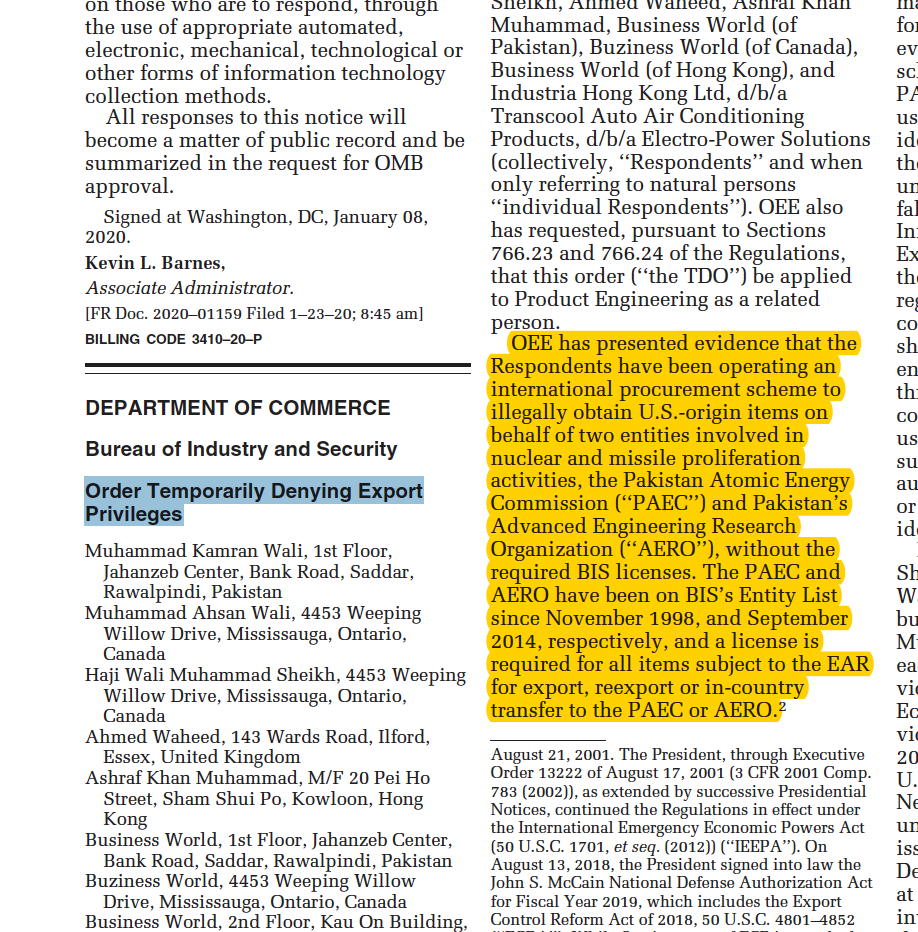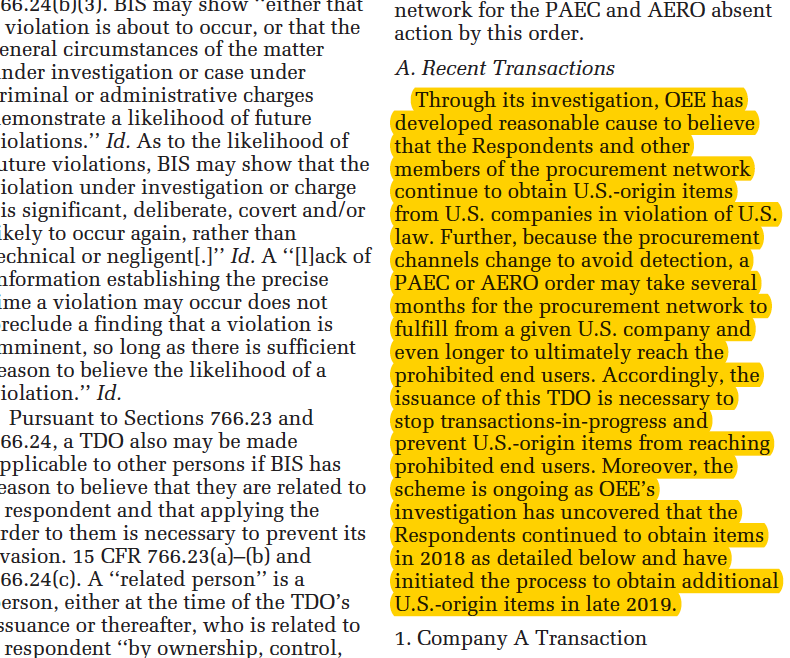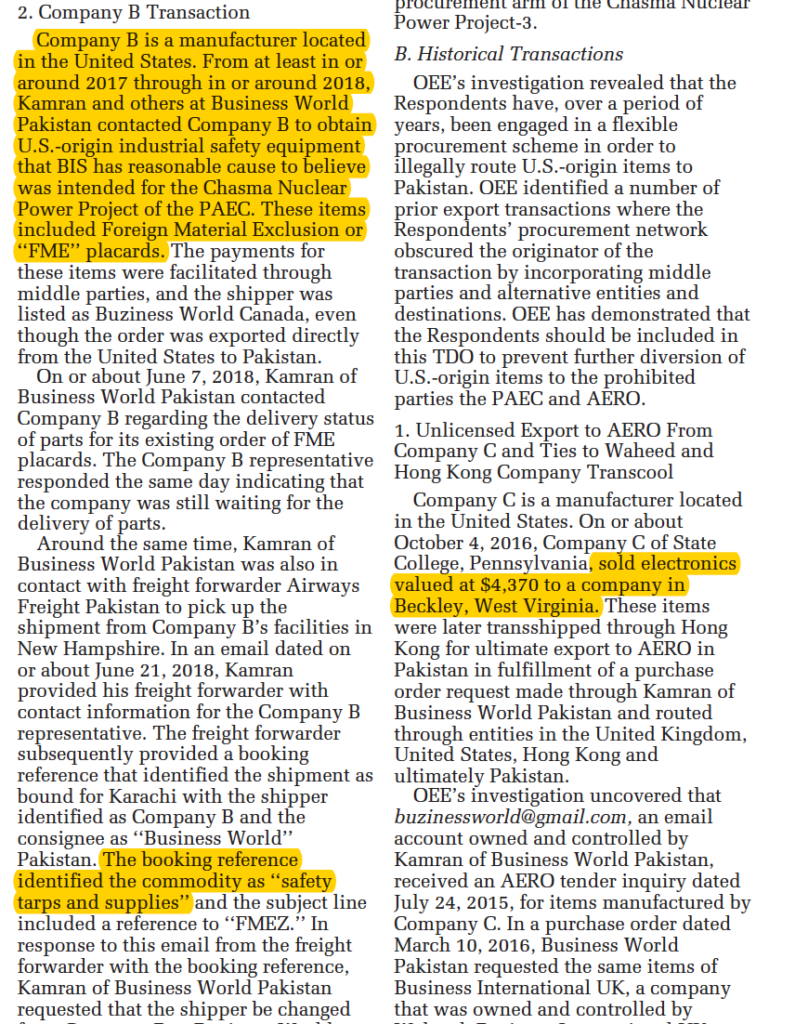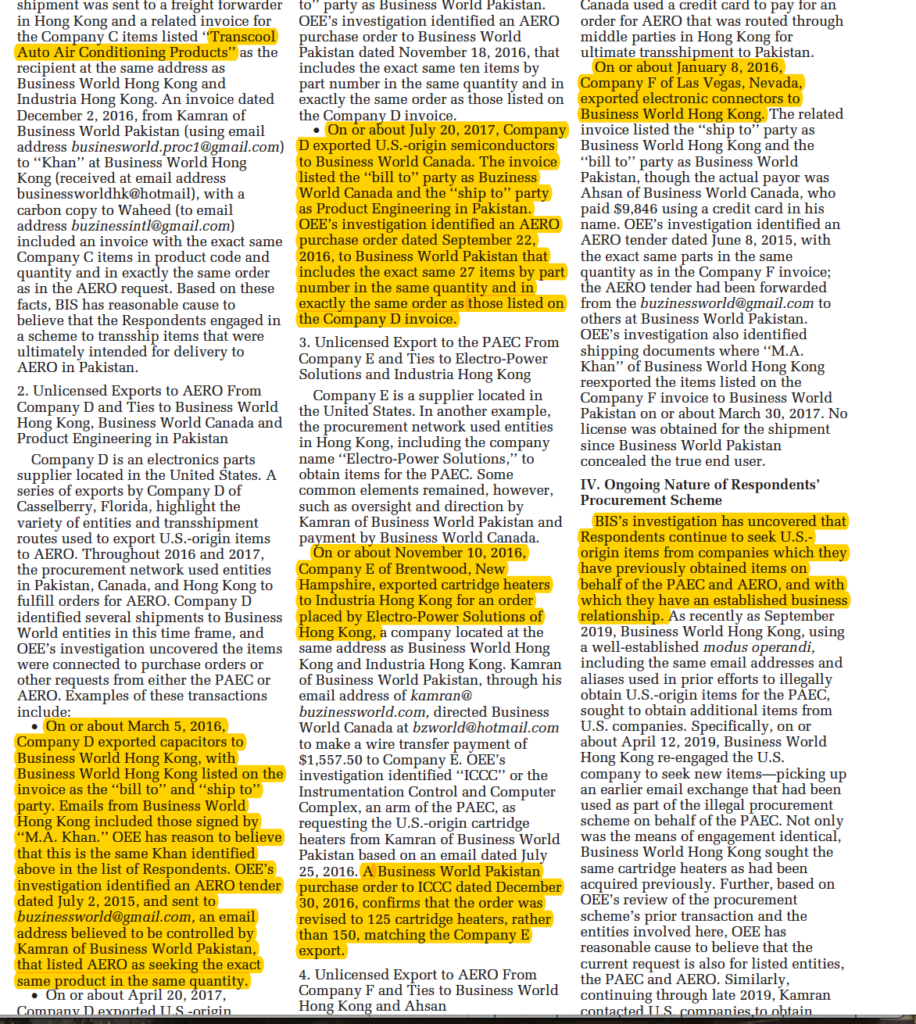Self-Explanatory.
Monthly Archives: February 2020
NNSA Officials, BAS, and NPR
The last bit from the BAS piece that I’ll mention is this reiteration of Trump Administration policy concerning retaliation for a nuclear terrorist attack:
The 2018 Nuclear Posture Review pointedly warns adversaries that abetting a terrorist nuclear attack against the United States would qualify for “the ultimate form of retaliation,” whose meaning should be unmistakable.
Presumably, they’re referring to this NPR paragraph:
For effective deterrence, the United States will hold fully accountable any state, terrorist group, or other non-state actor that supports or enables terrorist efforts to obtain or employ nuclear devices. Although the role of U.S. nuclear weapons in countering nuclear terrorism is limited, our adversaries must understand that a terrorist nuclear attack against the United States or its allies and partners would qualify as an “extreme circumstance” under which the United States could consider the ultimate form of retaliation.
I’m not sure that I understand the point of the ambiguous language, but there it is.
Pakistan, AERO, and AWC
The FR notice that I cited in this post described illegal exports destined for the the Pakistan Atomic Energy Commission (PAEC) and Pakistan’s Advanced Engineering Research Organization (AERO). Whether and to what extent the PAEC is connected to Pakistan’s nuclear weapons program isn’t clear to me. In fact, a 2011 BIS press release described the PAEC as ” the science and technology organization in Pakistan responsible for Pakistan’s nuclear program, including the development and operation of nuclear power plants in Pakistan.”
AERO, however, is a bit different. According to this 2014 FR notice, the organization “has procured items on behalf of Pakistan’s Air Weapons Complex [AWC], a Pakistani government entity responsible for Pakistan’s cruise missile and strategic UAV programs.” The AWC is itself a subsidiary of Pakistan’s National Engineering and Scientific Commission (NESCOM), says this 2016 FR notice.
There’s also some relevant evidence from the Pakistani government. Back in 2008, Pakistan’s ISPR depicted a connection between NESCOM and the AWC:
General Tariq Majid, Chairman Joint Chiefs of Staff Committee (CJCSC) visited Air Weapons Complex (AWC). On arrival he was received by Chairman National Engineering and Scientific Commission (NESCOM) Mr. Irfan Burney and Air Vice Marshal Zubair Iqbal Malik, Director General Air Weapons Complex.
And this documentary on NESCOM has images of the Babur (4:28) and Ra-ad (4:48) nuclear-capable cruise missiles.
Pakistan and Export Controls
A few weeks ago, BIS published in the Federal Register an Order Temporarily Denying Export Privileges to a number of entities for illegal exports to Pakistan. The FR notice contains more detail than I ever recall seeing in such a notice.
This is a good summary:
Respondents operated a well-developed procurement scheme for at least five years, designed to circumvent U.S. restrictions on exports of items to the PAEC and AERO based on their involvement in the proliferation of nuclear and missile technology. This scheme involved multinational entities and players located in at least three countries, the use of related and unrelated companies, changeable transshipment routes, and duplicitous methods of payment. Respondents themselves routinely generated false information to avoid detection of the scheme. In addition, on its own, the unsealing of the criminal indictment against the individual Respondents will not give the public sufficient notice of the individuals and entities involved in the ongoing procurement scheme. Thus, with the identification of the Respondents as set forth in this TDO, the undersigned expects to reduce the likelihood that U.S.-origin items will be exported, reexported or transferred to listed entities as part of the procurement scheme.
The notice adds that “the scheme is durable and ongoing.” Below are highlighted portions of the FR notice which explain some of what PAEC, AERO, et al have been up to and for what they’ve been shopping.




T Drumheller on U.S. Iran Intel
In 2006, the late Tyler Drumheller told PBS that the Bush administration diverted intel resources from Iran’s nuclear program to Iraq’s nuclear program in February 2001.
In the late Clinton administration, in the middle ’90s, there was a large push on Iraq. Then in the late ’90s, as they became more concerned about the nuclear proliferation in Iran, there was a movement of resources from Iraq to Iran. I was in the field then, so I saw that. It was seen as [compared to] Iraq, with the inspectors and with the sanctions and all, that Iran presented a much more dangerous threat than Iraq. Right after the Bush administration came in in February of 2001, we got the word to start gearing up on Iraq, start gearing up [intelligence] collection on Iraq, resources back to Iraq, that these guys were focused on Iraq.
I hadn’t heard this before.
NNSA Officials on Nuclear Terrorism Threat
The Tilden/Boyd BAS piece to which I previously referred contains what looks to be a current threat assessment of nuclear terrorism:
Although there is no reason to believe that any terrorist group today possesses a nuclear weapon or even an organized program to obtain one, several groups have been unambiguous about their desire to achieve this capability,
Discharge: The End
Millions dead and dying/Mass death and destruction!
Nuclear Terrorism Fight
The Bulletin recently decided to let some folks add gasoline to a fire. Chris McIntosh and Ian Storey (Bard College) wrote that a terrorist organization able to acquire a nuclear weapon,
will weigh all of its options seriously. And these options are not limited to a binary choice of attack or hold. In reality there are a slate of options for how to “use” a nuclear weapon, and we can divide these into five categories, only one of which is detonation.
Jay Tilden and Dallas Boyd (NNSA) responded. I’m not sure that the two sides disagree all that much, but reading both pieces is instructive. In addition to an excellent summary of U.S. efforts to prevent terrorist acquisition and use a of a nuclear weapon, Tilden and Boyd provide an interesting rationale for focusing on potential terrorist detonation a nuclear weapon:
By studying the acquisition-use assumption purely in the abstract, the authors fail to consider its catalytic effect on global nuclear security efforts. Where they see unimaginativeness in this assumption, national security professionals see a simple, arresting principle that crystallizes the enormity of the consequences if terrorists were to obtain enough material for even a single nuclear device. This recognition in turn helps galvanize the costly and intensive work necessary to protect nuclear material from illicit acquisition worldwide.
Not sure it really responds to the argument, but it’s an important point. Referee the fight yourselves.
CIA on Yugoslavia’s CW Program
A few years back, the CIA published an account of an analyst’s discovery of Yugoslavia’s offensive CW program during the mid-1990s. The article centers around a U.S. investigation of a CW production facility in Croatia and its fate during the civil war. There’s a good description of Serbia’s efforts to dismantle its own CW program, some of which involved destroying parts of this facility “in a matter of hours” – an action which “caused the deaths of several soldiers from CW agents”
In addition, the article discusses the means by which Yugoslavia hid the Croatia-based facility, although a fair amount of relevant info is redacted. In one case, the government chose not to prosecute “a few dozen villagers” who had “tapped into the plant’s dedicated water line,” rather than reveal the facility’s true purpose.
Worth your time.
Policy Analysis from Q Tarantino
One needs to understand a policy’s goals In order to evaluate its effectiveness – a concept illustrated by an exchange In the film Jackie Brown.
Ordell Robbie, after admonishing his lady friend for smoking weed early in the afternoon, asserts that ingesting THC in such a manner will “rob you of your own ambition,” to which Melanie retorts, “[n]ot if your ambition is to get high and watch TV…”
Yes, it’s 12+ years old, but stands the test of time.
